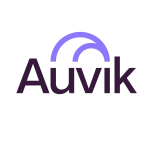What is our primary use case?
We've been using SolarWinds for our network monitoring. It's basic advanced network monitoring, up-down of Rogers switches, as well as metrics, latency, wireless metrics, where users are, errors on interfaces, route cables, and things of that nature. We're just pulling as much data from our network devices as possible to present that in an easy pane of glass.
What is most valuable?
I find the NetPath to be very valuable. It visualizes that traceroute that you can share with anyone in the business. For example, when they say, "Hey, what's going on? The network's slow because my application or my server's having issues" you can show them this nice graph that visualizes where there may be congestion or if there isn't any congestion at all.
Its initial setup is simple.
What needs improvement?
So far, it's been pretty good, however, due to the whole solar flare thing that happened two years ago, a lot of cybersecurity and leadership's kind of looking to replace it with something else. We're currently just trying to find other info or anybody else who's comparable in terms of other network monitoring solutions.
Wireless monitoring needs improvement. We need to get a little bit more information from the thin clients or wireless LAN controllers than we already do. It's very minimal at this point and getting more information would be pretty vital.
There should be a little bit more integration in some of the other tooling and utilizing the APIs of devices or tools could be a little bit better. It would help to present information - rather than trying to get the highest level of administrative access to present minimal information. There are a lot of aspects where they give you base information, however, for other necessary gleams of information, you may need to have high-low. For instance, for Linux servers, you need to have pseudo access to get the necessary information to monitor and that's kind of a hassle.
For how long have I used the solution?
We've been using the solution for about three years.
What do I think about the stability of the solution?
The stability is fantastic. We haven't personally had any issues other than a few gripes about the lack of information. However, as far as it being stable, for me, it's been pretty solid.
What do I think about the scalability of the solution?
It's possible to scale, however, it comes at a cost. You have to go through them and there's a whole nother license piece that costs a large lump sum to grow your polers to start importing more if your initial server is getting towards a limit. It's scalable, with the caveat of it's going to cost you.
We have about ten to 20 users. It's a mix of network analysts, CIS admins, storage administrators, and application administrators.
We do not plan to increase usage at the moment, mainly as we're pretty much utilizing it as much as we need to, however, it is pretty much monitoring our entire environment or maybe couple hundred switches, some routers, couple hundred servers, and applications and things like that. We pretty much monitor our whole environment and our environment's not really growing anymore. We're pretty good right now.
How are customer service and support?
Technical support is pretty good. In the few cases we have reached out for any support, they've been pretty responsive. Also, their online resources and knowledge bases are very extensive as well.
How would you rate customer service and support?
Which solution did I use previously and why did I switch?
We actually didn't use anything before this product.
How was the initial setup?
The implementation process is pretty straightforward. They give you an MSI and once you have your servers and databases set up, it's just a couple of clicks and it's set up.
For overall importing of everything may have taken a couple of weeks to have things up and running due to how our organization is structured and how we can gather information to pull into SolarWinds and our implementation strategy. For example, who set up servers and applications. We start getting with the appropriate aims to get whatever monitor or whatever polling method we need, whether it was S and NP strings or accounts for any server monitoring with administrative access or whatnot. Then we look at the network and do those automatic scans from there. Once we start pulling in that information, we start actually organizing all the nodes in there to properly alert and monitor. It takes maybe a month or so to get it to a baseline.
For deployment and maintenance, honestly, it's just me by myself doing it. It would be easier with a few more people.
What about the implementation team?
The setup was done in-house. We did not use any third party, like an integrator, reseller, or consultant.
What was our ROI?
As far as assisting in being proactive in our network, it's been a great help in helping us maintain a healthy environment and being proactive and making sure things are up to date and upgraded.
What's my experience with pricing, setup cost, and licensing?
The standard licensing fees are what we're paying. It's about $20,000 a year for all our licensing.
Which other solutions did I evaluate?
There weren't any other options were evaluated. We saw SolarWinds and noted our other sister companies use that. We just went with it to be standardized within our entire conglomerate.
What other advice do I have?
We are a customer and end-user.
I would definitely advise others to do their homework. There are a lot of different modules you can buy with different licensing. You need to understand what you're looking to monitor, and what you're trying to present to your business, and then do the homework on the solution itself and see how that fits your needs before just going and buying it or even talking to a sales representative.
I'd rate the solution eight out of ten. It's pretty good at its job. I haven't really delved into too many other things. I've tried to look at other tools recently and in my opinion, solutions like Nagios or Zabbix aren't the best. I haven't really looked into other things like Datadog or LogicMonitor yet, however, I'd say this solution is kind of a leader in the pack for what it's doing. Still, there's definitely room for improvement.
Which deployment model are you using for this solution?
On-premises
Disclosure: My company does not have a business relationship with this vendor other than being a customer.




















